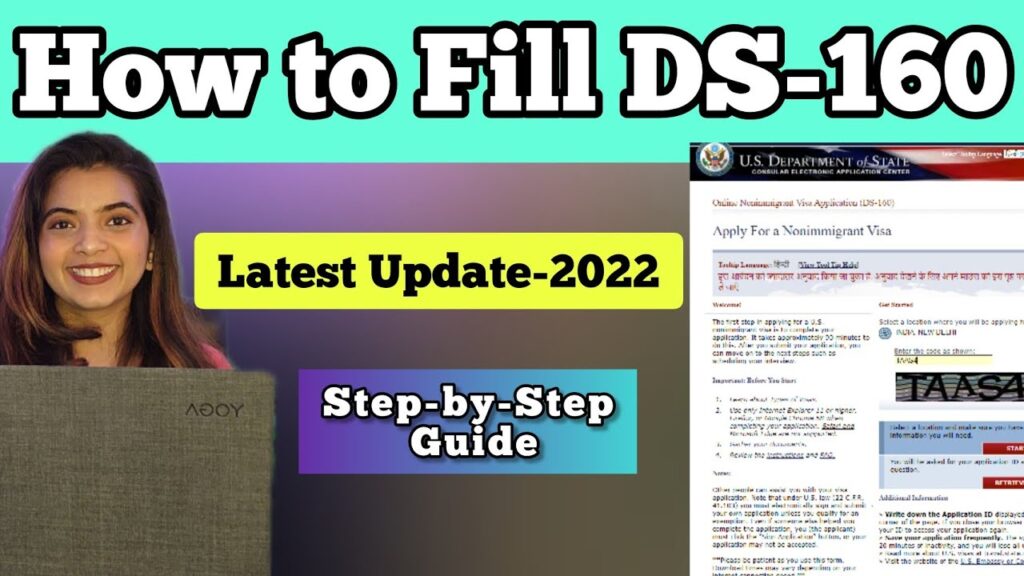How to Correct Errors on US Visa Application A Step by Step Guide

HOW TO CORRECT ERRORS ON US VISA APPLICATION Mistakes on a U.S. visa application can lead to delays or even denial of the visa. Therefore, it’s crucial to ensure that all information provided is accurate and complete. However, if errors are discovered after submission, it is possible to correct them. This article provides a detailed guide on how to correct errors on your U.S. visa application, covering different types of applications and steps to rectify common mistakes.
Understanding the Types of Errors
1. Minor Errors
Minor errors include typographical mistakes, incorrect dates, or minor discrepancies in personal information that do not significantly alter the application’s validity.
2. Major Errors
Major errors are significant inaccuracies that could affect the processing of the visa, such as incorrect passport numbers, names, or misstatements about your travel purpose or background information.
Steps to Correct Errors on the DS-160 Form
Step 1: Identify the Error
Carefully review your DS-160 form confirmation page and saved application to identify the exact nature of the error. This will determine the appropriate correction process.
Step 2: Decide Whether to Correct or Start Over
- Before Submission: If you notice an error before submitting the form, you can go back and correct it directly within the application.
- After Submission but Before Interview: If the error is discovered after submitting the form but before your visa interview, you have the option to correct it by submitting a new DS-160 form.
- After Submission and Interview Scheduled: If you’ve already scheduled an interview, you still need to correct the form. However, ensure to inform the embassy or consulate of the new DS-160 confirmation number.
Step 3: Submit a New DS-160 Form
If you need to correct significant errors after submission:
- Complete a New DS-160 Form: Go to the U.S. Department of State’s Consular Electronic Application Center (CEAC) website and complete a new DS-160 form with the correct information.
- Save and Print the Confirmation Page: Once the new DS-160 form is submitted, save and print the new confirmation page with the barcode.
Step 4: Inform the Embassy or Consulate
If you have already scheduled an interview, email or call the U.S. embassy or consulate where your interview is scheduled. US VISA APPLICATION PROCESS Provide them with the new DS-160 confirmation number and explain that you have submitted a corrected application.
Step 5: Bring Both Confirmation Pages to the Interview
On the day of your interview, bring both the old and new DS-160 confirmation pages. This helps the consular officer understand that you have corrected the errors.
Correcting Errors on Other Visa Forms
Immigrant Visa Forms (DS-260)
For immigrant visas, the DS-260 form is used. If errors are found after submission:
- Complete a New DS-260 Form: Like the DS-160, you can fill out a new DS-260 form if significant errors are found.
- Notify the National Visa Center (NVC): Email the NVC with the new DS-260 confirmation number and explain the corrections made.
- Bring Documentation to the Interview: Bring the new DS-260 confirmation page and any related documentation to your visa interview.
Nonimmigrant Visa (NIV) Applications
For nonimmigrant visas other than the DS-160:
- Contact the Embassy or Consulate: Immediately contact the U.S. embassy or consulate handling your application. They may provide instructions on how to correct the error or request a new application.
- Submit Corrected Documents: Follow the instructions given to submit corrected documents or a new application.
Tips to Avoid Errors
- Review Carefully: Double-check all information before submitting any visa application forms.
- Use Official Guides: Refer to the official U.S. Department of State website for guidelines and instructions.
- Seek Professional Help: If unsure, consider seeking assistance from a visa consultant or immigration attorney.
Conclusion
Correcting errors on a U.S. visa application is possible but requires prompt action and careful attention to detail. By following the steps outlined in this guide, you can ensure that your application is accurate, reducing the risk of delays or denials. Always review your application thoroughly before submission and consult official resources or professionals if needed.






